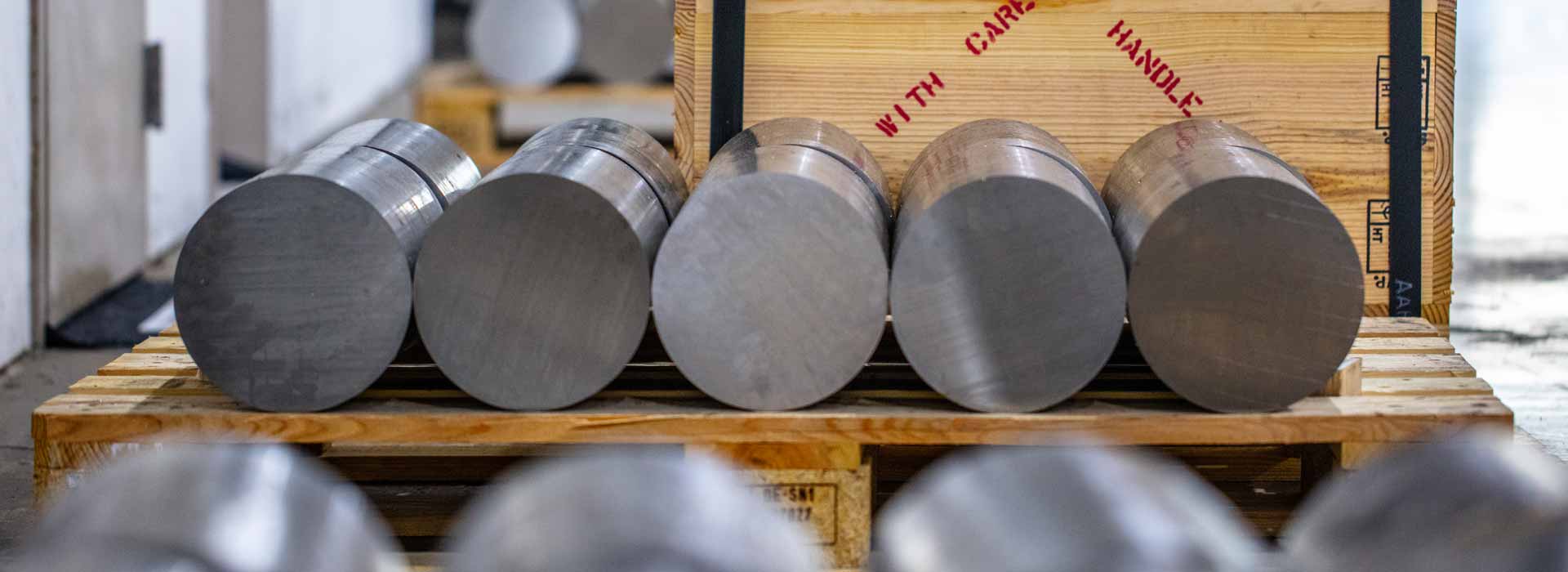A term applied to Open-Hearth steel wire if the .45/75 carbon range either hard drawn or oil tempered. Oil tempered wire of M B and W M ?B types are the most widely used of all spring wired. Oil tempered wire is more ?suitable to precision forming and casting operations than hard drawn wire, ?because of close control of tensile strength and superior straightness.
Consists of immersing a carefully prepared section of the steel in hot acid and of examining the etching surface to evaluate the soundness and homogeneity of the product being tested.
A photographic reproduction of any object that has not been magnified more than ten times.
Visible either with the naked eye or under low magnification (as great as about ten diameters).
The structure of metal as revealed by macroscopic examination.
The property that determines the ease of deforming a metal when the metal is subjected to rolling or hammering. The more malleable metals can be hammered or rolled into thin sheet more easily than others.
A process of annealing white cast iron in such a way that the combined carbon is wholly or partly transformed to graphitic or free carbon or, in some instances, part of the carbon is removed completely.
(Steel) - Not as smooth as normal mill finish. Produced by etched or mechanically roughened finishing rolls.
(Chemical symbol Mn.) - Element No. 25 of the periodic system; atomic weight 54.93. Lustrous, reddish-white metal of hard brittle and, therefore, non-malleable character. The metal is used in large quantities in the form of Spiegel (See) and Ferromanganese (See) for steel manufacture as well as in manganese and many copper-base alloys. Its principal function is as an alloy in steel making: (1) It is ferrite-strengthening and carbide forming element. It increases hardenability inexpensively, with a tendency toward embrittlement when too high carbon and too high manganese accompany each other. (2) It counteracts brittleness from sulfur.
A distinctive needlelike structure existing in steel as a transition stage in the transformation of austenite, It is the hardest constituent of steel of eutectoid composition. It is produced by rapid cooling from quenching temperature and is the chief constituent of hardened carbon tool steels. Martensite is magnetic.
Those properties of a material that reveal the elastic and inelastic reaction when force is applied, or that involve the relationship between stress and strain; for example, the modulus of elasticity, tensile strength and fatigue limit. These properties have often been designated as "physical properties," but the term "mechanical properties" is much to be preferred. The mechanical properties of steel are dependent on its microstructure. (See Physical Properties).
Any spring produced by cold forming from any material with or without subsequent heat treatment.
Plastic deformation or other physical change to which metal is subjected, by roiling, hammering, drawing, etc. to change its shape, properties or structure.
Contains from 0.30% to 0.60% carbon and less than 1.00% manganese. May be made by any of the standard processes,
The range of temperature in which an alloy melts; that is the range between solidus and liquidus temperatures.
A process for applying a coating of metal to an object. The metal, usually in the form of wire, is melting by an oxyhydrogen or oxyacetylene blast or by an electric arc and is projected at high speed by gas pressure against the object being coated.
The science concerning the constituents and structure of metals and alloys as revealed by the microscope.
(a) Element intermediate in lustre and conductivity between the true metals and non-metals. Arsenic, antimony, boron, tellurium, and selenium, etc., are generally considered metalloids; frequently one allotropic modification off an element will be non-metallic, another metalloid in character. Obviously, no hard and fast line can be drawn. (b) In steel metallurgy, metalloid in has a specialized, even of erroneous, meaning; is covers elements commonly present in simple steel; carbon, manganese, phosphorus, silicon and sulfur.
The structure of polished and etched metal and alloy specimens as revealed by the microscope.
The edge of strip, sheet or plate in the as rolled state. Unsheared.
A surface finish produced on sheet and plate. Characteristic of the ground finish used on the rolls in fabrication.
(Tension) - Force which would be required to stretch a substance to double its normal length, on the assumption that it would remain perfectly elastic, i.e., obey Hooke?s Law throughout the test. The ratio of stress to strain within the perfectly elastic range.
Of a material suffering shear, the ratio of the intensity of the shear stress across the section to the shear strain, i.e., to the angle of distortion in radians; expressed on pounds or tons per square inch.
A form of cavity onto which molten metal is poured to produce a desired shape.
(Chemical Symbol Mo) - Element No. 42 of the periodic system; atomic weight 95.95. Hard, tough metal of grayish-white color, becoming very ductile and malleable when properly treated at high temperatures; melting point 4748?F.;boiling point about 6600?F.; specific gravity 10.2. Pure molybdenum can best be obtained as a black powder, by reduction of molybdenum trioxide or ammonium molybdate with hydrogen. From this powder, ductile sheet and wire are made by powder metallurgy techniques; these are used on radio and related work. Its principal functions as an alloy in steel making: (1) Raises grain-coarsening temperature of austenite. (2) Deepens hardening. (3)
(A Refractory Alloy) - Alpha-beta brass, 60% copper and 40% zinc. Stronger than alpha-brass and used for castings and hot-worked (rolled, stamped, or extruded) products. High strength brasses are developed from this by adding other elements.
A polished high tensile strength cold drawn wire with higher tensile strength and higher torsional strength than any other material available. These high mechanical treatment and by many continuous passes through drawing dies. The high toughness characteristic of this material is obtained by the patenting (which see). Such wire is purchased according to tensile strength, not hardness.
